ATC Human Factors Involved in RPAS Contingency Management in Non-Segregated Airspace
Abstract
1. Introduction
2. Method
2.1. Human Factor Evaluation Methods in the Aviation Domain
2.2. Human Factor Concerns in RPAS Operations
- (a)
- Dissimilar RPAS flight performance and mission trajectory. ATCO expects certain aircraft performance levels in the airspace system in order to orchestrate traffic safely, efficiently, and under an acceptable workload. Although the training of ATCO prepares them to safely manage aircrafts that cannot meet the expected performance due to emergencies, RPAS may be especially disruptive due to their highly dissimilar performance characteristics. Besides this, RPAS may require increased controller monitoring, with necessary clearance amendments issued to move manned traffic around it (increasing fuel burn) or to decelerate traffic (leading to delays) [23]. In addition, compared to typical point-to-point operations, an increase in mission-oriented flight trajectories may also increase the controllers’ workload.
- (b)
- Loss of natural sensing. Without a rich set of sensory cues related to RPAS, operations may decrease the situational awareness of the PiC. For example, RPAS pilots cannot accept instructions from air traffic controllers to acquire and separate from other aircrafts visually. ATCO requires positive acknowledgement that one pilot has the other aircraft in sight. These visual operations are beneficial to the controller in high-workload situations. ATCO should manage the airspace, including some RPAS missions, in a comparable way to situations where the flight of a conventional aircraft proceeds under instrumental meteorological conditions.
- (c)
- Human-machine interface issues. Air traffic controllers need to use the proper HMI interfaces to access specific flight data about the traffic they monitor and control and RPAS may introduce further information requirements. Using those new interfaces must prevent the ATCO from becoming confused about the automation’s current and future status (i.e., operating mode), thus avoiding incorrect interactions. For example, controllers may have access to information such as aircraft identification, aircraft type, and specific on-board equipment for manned aircrafts. However, it is still unclear what additional information controllers would require properly supervising RPAS operations properly; flight-intent technology may be a mechanism that could increase ATCO situational awareness. However, at the same time, such new interfaces may increase the ATCO workload by requiring the operation of a new source of information. From an opposite perspective, early standardisation discussions emphasised transparency so that controllers would not necessarily know if an aircraft is manned or unmanned. However, it may seem obvious that there are unique aspects to RPAS operations and that controllers may need to be aware of those RPAS-specific characteristics to maintain safety, efficiency, and an acceptable workload level.
- (d)
- Communication issues. Ineffective communication and other communication-related factors are the underlying causes of most ATCO workload increases. In a controlled airspace, communication between PiC and ATCO may occur through the relay of traditional very-high-frequency radio transmitted through the unmanned vehicle. However, such a relay may introduce significant latencies, especially if implemented via satellite links that may be sufficient to disrupt verbal communication. Besides this, there are common mistakes in radio use associated with operational factors, such as using the wrong phraseology or the incorrect understanding of the required commands.
2.3. Nominal RPAS Conditions and Contingencies into Non-Segregated Airspace
2.3.1. Nominal and Contingency Flight Plans
2.3.2. Loss of the Command-and-Control Link Contingency
- Mission duration: the RPAS may operate over an area of interest for an extremely long time. In that case, executing an early termination of the mission may be advisable, cancelling that part of the mission. However, that cancellation may require moving directly from the departure or mission part of the operation to the return trajectory.
- Mission extension: the RPAS may execute an extremely extensive mission. Cancelling the mission may require the RPAS to operate thousands of miles in the outbound trajectory and return to the intended destination airport. Under that scenario, it becomes unclear if completing that extensive round trip with the RPAS suffering a communication failure is advisable. Therefore, early mission cancellation would require using pre-established turnaround points that have been adequately coordinated with the ATC authorities.
2.3.3. RPAS Engine Failure Contingency
- (a)
- Airport selection: Assuming an engine contingency, the safest line of action is to determine the available landing locations safely accessible within the gliding capabilities of the RPAS. Low-traffic secondary airports/airfields would be a priority, with further alternatives being flat fields, waterways, etc. The PiC may determine if the safest action is to divert to a more distant airfield instead of the nearest airfield, taking into account not only the pre-planned trajectories but also the actual vehicle state, wind direction, weather conditions, etc. Airfields and airports should have preliminary agreements with the ATM authority to specify if the RPAS is accepted in case of emergency conditions. In this sense, airports should be able to manage potential runway accidents and remove the RPAS after a successful landing, crash landing, or failure of taxi capabilities. Some airports may have an alternative area to perform controlled RPAS crashes to avoid damage to people or properties. As a final factor, on each landing site, some waypoints must be assigned to guide the landing procedure, such as the Initial and Final Approach Fix. Figure 2 depicts the emergency airport selected in one of our engine failure contingency experiments. Note that a small portion of the northwest trajectory has no viable coverage; thus, additional contingency landing sites may need to be included.
- (b)
- Alternative trajectories: In case of RPAS engine failure, any change in the predefined trajectories must consider the area of operation, gliding capabilities, and traffic volume. We assume that the RPAS flight range is limited by its gliding ratio, disregarding other factors such as battery life and limitations in the actuators. The collection of alternative trajectories must provide early and late flight termination alternatives. Early flight termination should be employed in the case of range/performance limitations or any other operational airport or ATCO requirement when the contingency occurs. Late alternates should be available when meteorology or operational restrictions change along the contingency procedure, rendering the initially planned emergency landing location unfeasible. Alternative trajectories should avoid overflying populated zones or highly elevated areas such as mountains. The ATCO must have available alternative routes to achieve predictable behaviour in case of needing to modify the RPAS nominal route at flight time. The new trajectory should minimise interaction with other airports, particularly with the controlled traffic region near the selected landing airfields. In addition, trajectories near the landing site could require extensive descent. Potential external factors, such as wind direction, could become an operation initially deemed feasible into unfeasible.
- (c)
- RPAS pilot-ATC communication: The RPAS notifies engine failure emergencies through standard radio procedures, declaring the emergency and indicating the targeted airfield and route. During emergency procedures, the RPAS pilot should keep up to date with the ATCO and indicate whether the RPAS would reach the intended airfield or need to divert to a closer alternative aerodrome or a designated termination area. The process should be as much as possible equivalent to those employed by airliners or instrumented flight rules aircraft.
3. Experiments
3.1. Pre-Planned RPAS Flight Trial Scenarios
3.2. Real-Time Simulation Experiments
3.3. Participants
3.4. Data Collection
3.5. Systems and Human–machine Interfaces in the ERAINT Project
3.6. Airspace Sectors, RPAS, and Selected Missions
- MQ-9 Frontex Surveillance mission: This mission simulates the surveillance of the European Border and Coast Guard Agency for ship detection/identification. The trajectory, shown in Figure 2, has an initial standard airways/fixpoints part from the San Javier airport (LELC) to the selected mission area and a return trajectory through Valencia airport. The mission area is over the Mediterranean Sea close to the Balearic Islands and the surveillance trajectory occurs within a non-segregated airspace but not following standard airways/fixpoints. The simulation area partially intersects sectors LECBNW2-CSX and LECBNE-CS. Both sectors form part of the six sectors of Barcelona FIR: the sector LECBNW2-CSX is in charge of the northern arrivals to the main Balearic airports and the sector LECBNE-CS is in charge of the departures from the same airports. In particular, the RPAS mission consists of a flight from the north to the south of the Balearic Islands.
- RQ-4A Volcano Surveillance mission: The RPAS has a volcanic ash surveillance mission departing from Hamburg Finkenwerder airport (EDHI) up to Iceland and then back to the same original airport, crossing multiple portions of non-segregated airspace over Germany, Denmark, and the North Sea. The surveillance occurs once it is over the Iceland area, but only the departure and arrival portions of the flight (see Figure 5) are considered during the evaluation. The RPAS flight plan of this mission crosses two different regions: Sector EKDKCUC in the southernmost flight information region of Koebenhavn, Denmark, and Sector EDYYHOL in the northernmost region of Hannover, Germany.
- EDHI Hamburg Finkenwerder Airport, with two operative runways (Runway 05 and Runway 23) and a dimension of 3183 × 45 m.
- EDXJ Husum Schwesing Airport, with two operative runways (Runway 03 and Runway 21) and a dimension of 1450 × 30 m.
- EKTS Thisted Airport, with two operative runways (Runway 10 and Runway 28) and a dimension of 1600 × 45 m.
- EKEB Esbjerg Airport, with two operative runways (Runway 08 and Runway 26) and a dimension of 2600 × 45 m.
- ENHD Haugesund Karmoy Airport, with two operative runways (Runway 14 and Runway 32) and a dimension of 2120 × 45 m.
4. Results
4.1. Results of the NASA-TLX and the Significance Test
4.2. Results of the Operational and Workload Questionnaires
4.3. Results of the Instantaneous Self-Assessment
4.4. Results of the Task-Load Impact from RPAS Integration in Non-Segregated Airspace
4.5. RPAS-TC Communication
4.6. Compliance with Contingency Procedures
5. Discussion
Author Contributions
Funding
Institutional Review Board Statement
Informed Consent Statement
Data Availability Statement
Conflicts of Interest
References
- Muhammad, S. Modeling Operator Performance in Human-in-the-Loop Autonomous Systems. IEEE Access 2021, 9, 102715–102731. [Google Scholar] [CrossRef]
- Lin, Y.; Deng, L.; Chen, Z.; Wu, X.; Zhang, J.; Yang, B. A Real-Time ATC Safety Monitoring Framework Using a Deep Learning Approach. IEEE Trans. Intell. Transp. Syst. 2020, 21, 4572–4581. [Google Scholar] [CrossRef]
- Spravka, J.; Moisio, D.; Payton, M. Unmanned Air Vehicles: A New Age in Human Factors Evaluations. In Flight Test–Sharing Knowledge and Experience; Nato: Washington, DC, USA, 2005; pp. 5-1–5-16. [Google Scholar]
- Kaliardos, B.; Lyall, B. Human Factors of Unmanned Aircraft System Integration in the National Airspace System. In Handbook of Unmanned Aerial Vehicles; Springer: Dordrecht, The Netherlands, 2014. [Google Scholar] [CrossRef]
- Kinney, L.; O’Hare, D. Responding to an Unexpected In-Flight Event: Physiological Arousal, Information Processing, and Performance. Hum. Factors J. Hum. Factors Ergon. Soc. 2020, 62, 1–14. [Google Scholar] [CrossRef]
- Corraro, G.; Corraro, F.; Ciniglio, U.; Filippone, E.; Pastor, E.; Peinecke, N.; Frau, G.; Theunissen, E.; Shaw, C. “Fast Time and Real Time Validation of a Remain Well Clear Function for Airspace Classes D to G.” SESAR Innovation Days. 5-8 December 2022. Available online: https://elib.dlr.de/188782/ (accessed on 13 January 2023).
- INVIRCAT. Investigate IFR RPAS Control in Airports and TMA. Available online: https://www.invircat.eu/dissemination-materials (accessed on 27 December 2022).
- Pastor, E.; Perez, M.; Royo, P.; Cuadrado, R.; Barrado, C. Real-time Simulations to Evaluate the RPAS Integration in Shared Airspace. Proceedings of the Fourth SESAR Innovation Days, 25–27 November 2014. Available online: https://www.sesarju.eu/sites/default/files/SID_2014-41.pdf (accessed on 13 January 2023).
- Lim, Y.; Gardi, A.; Sabatini, R.; Ramasamy, S.; Kistan, T.; Ezer, N.; Vince, J.; Bolia, R. Avionics Human-Machine Interfaces and Interactions for Manned and Unmanned Aircraft. Prog. Aerosp. Sci. 2018, 102, 1–46. [Google Scholar] [CrossRef]
- Reid, G.B.; Nygren, T.E. The Subjective Workload Assessment Technique: A Scaling Procedure for Measuring Mental Workload. Adv. Psychol. 1988, 52, 185–218. [Google Scholar] [CrossRef]
- Jordan, C.S.; Brennen, S.D. Instantaneous self-assessment of workload technique (ISA). 1992. Available online: https://skybrary.aero/sites/default/files/bookshelf/1963.pdf (accessed on 13 January 2023).
- Weber, L. Cognitive Architecture for Safety Critical Task Simulation-Part 1: An Introduction to CASCaS. Institute for Information Technology (OFFIS): Oldenburg, Germany, 2015. [Google Scholar]
- Air-Man-Machine Integration Design and Analysis System (Air-MIDAS) NASA-AMES Research Center. Available online: https://humansystems.arc.nasa.gov/groups/midas/ (accessed on 13 January 2023).
- Moon, S.M.; Qu, Y. A quantitative approach for determining pilot affective patterns during soaring flight simulation. In Proceedings of the 2017 3rd IEEE International Conference on Computer and Communications (ICCC), Chengdu, China, 13–16 December 2017; pp. 2617–2624. [Google Scholar] [CrossRef]
- Mansikka, H.; Virtanen, K.; Harris, D. Comparison of NASA-TLX scale, modified Cooper–Harper scale and mean inter-beat interval as measures of pilot mental workload during simulated flight tasks. Ergonomics 2019, 62, 246–254. [Google Scholar] [CrossRef] [PubMed]
- Zak, Y.; Parmet, Y.; Oron-Gilad, T. Subjective Workload Assessment Technique (SWAT) in Real Time: Affordable Methodology to Continuously Assess Human Operators’ Workload. In Proceedings of the 2020 IEEE International Conference on Systems, Man, and Cybernetics (SMC), Toronto, ON, Canada, 11–14 October 2020; pp. 2687–2694. [Google Scholar] [CrossRef]
- Gawron, J. Measures of Situational Awareness from: Human Performance and Situation Awareness Measures; CRC Press: Boca Raton, FL, USA, 2019. [Google Scholar]
- Lebiere, C.; Blaha, L.M.; Fallon, C.K.; Jefferson, B. Adaptive Cognitive Mechanisms to Maintain Calibrated Trust and Reliance in Automation. Front. Robot. AI 2021, 8, 652776. [Google Scholar] [CrossRef] [PubMed]
- Nguyen, T.; Lim, C.P.; Nguyen, N.D.; Gordon-Brown, L.; Nahavandi, S. Review of situation awareness assessment approaches in aviation environments. IEEE Syst. J. 2019, 13, 3. [Google Scholar] [CrossRef]
- Capacity Analysis Methodology (CAPAN). Eurocontrol. Available online: https://www.eurocontrol.int/methodology/capacity-analysis-methodology (accessed on 13 January 2023).
- Saeed, A.; Trajanovski, S.; Van Keulen, M.; Van Erp, J. Deep Physiological Arousal Detection in a Driving Simulator Using Wearable Sensors. In Proceedings of the 2017 IEEE International Conference on Data Mining Workshops (ICDMW), New Orleans, LA, USA, 18–21 November 2017; pp. 486–493. [Google Scholar] [CrossRef]
- Hobbs, A.; Lyall, B. Human Factors Guidelines for Remotely Piloted Aircraft System (RPAS) Remote Pilot Stations (RPS). National Aeronautics and Space Administration. July 2016. Available online: https://human-factors.arc.nasa.gov/publications/PS_02219_Human_Factors_Guidelines_web.pdf (accessed on 13 January 2023). [CrossRef]
- Perez-Batlle, M.; Pastor, E.; Prats, X.; Royo, P.; Cuadrado, R. Maintaining separation between airliners and RPAS in non-segregated airspace. A: Air Traffic Management Research and Development Seminar. In Proceedings of the USA/Europe Air Traffic Management Research and Development Seminar, Chicago, IL, USA, 10–13 June 2013; pp. 1–10. [Google Scholar]
- Pastor, E.; Royo, P.; Santamaria, E.; Prats, X.; Barrado, C. In-Flight Contingency Management for Unmanned Aerial Vehicles. J. Aerosp. Comput. Inform. Commun. 2012, 9, 144–160. [Google Scholar] [CrossRef]
- Makins, N. Executive Controller Conflict Detection Using Aircraft Derived Intent Data, EUROCONTROL EEC Note No. 16/04. Available online: https://www.eurocontrol.int/node/9886 (accessed on 28 November 2022).
- Pasaoglu, C.; Akcam, N.; Koyuncu, E.; Tarhan, A.F.; Inalhan, G. Collaborative Intent Exchange Based Flight Management System with Airborne Collision Avoidance for UAS. J. Intell. Robot. Syst. 2016, 84, 665–690. [Google Scholar] [CrossRef]
- Demand Data Repository (DDR) Project. Available online: http://www.eurocontrol.int/services/ddr2 (accessed on 13 January 2023).
- Carbo, L. Approach to the Introduction of RPAS in BADA 3 Aircraft Performance Model; Technical Report; Eurocontrol: Bretigny, France, 2015. [Google Scholar]
- Eurocontrol. Existing RPAS Models; Technical Report; Eurocontrol: Bretigny, France, 2015. [Google Scholar]
- Early Demonstration and Evaluation Platform. Eurocontrol. Available online: https://www.eurocontrol.int/simulator/edep (accessed on 15 January 2023).
- The Network Strategic Tool (NEST). Eurocontrol. Available online: https://www.eurocontrol.int/model/network-strategic-modelling-tool (accessed on 13 January 2023).
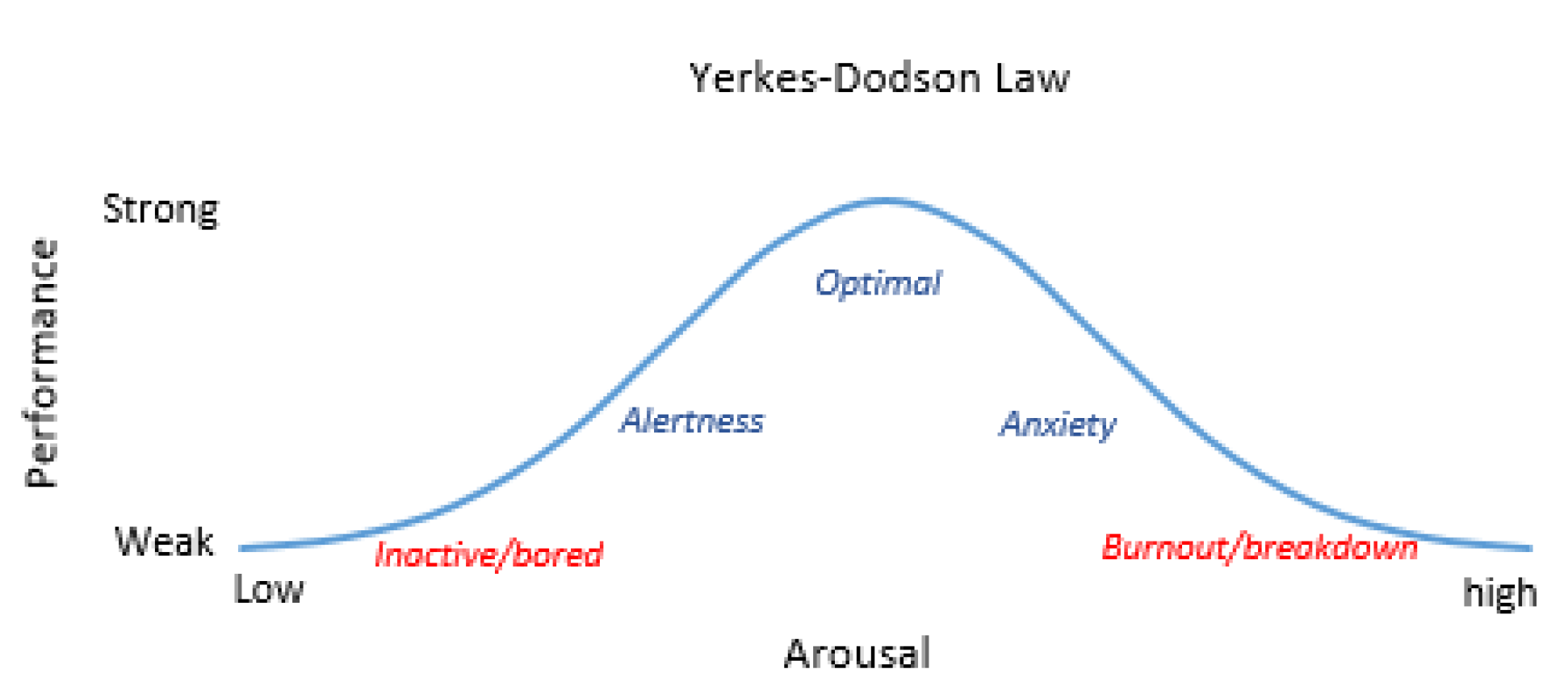

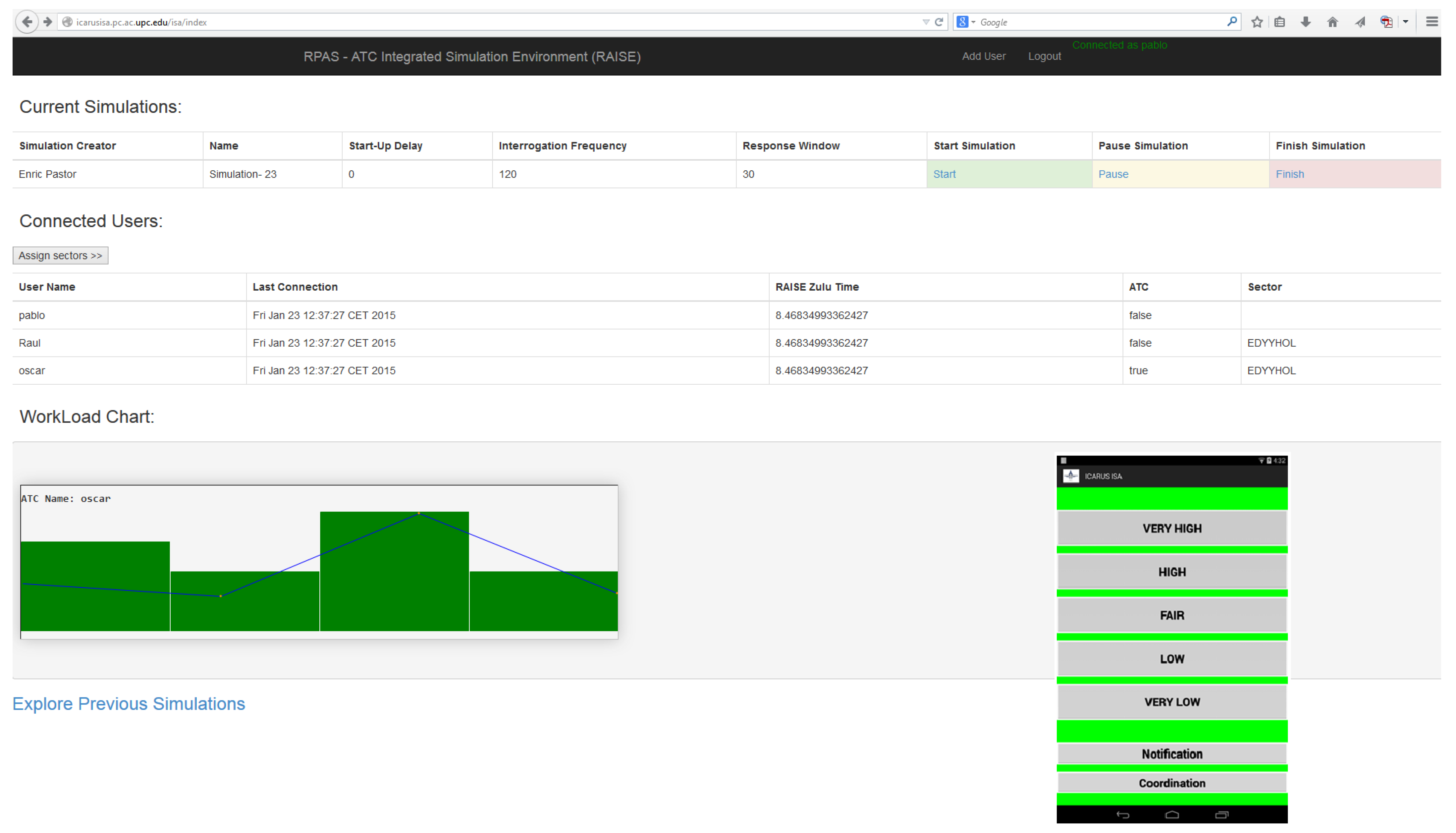
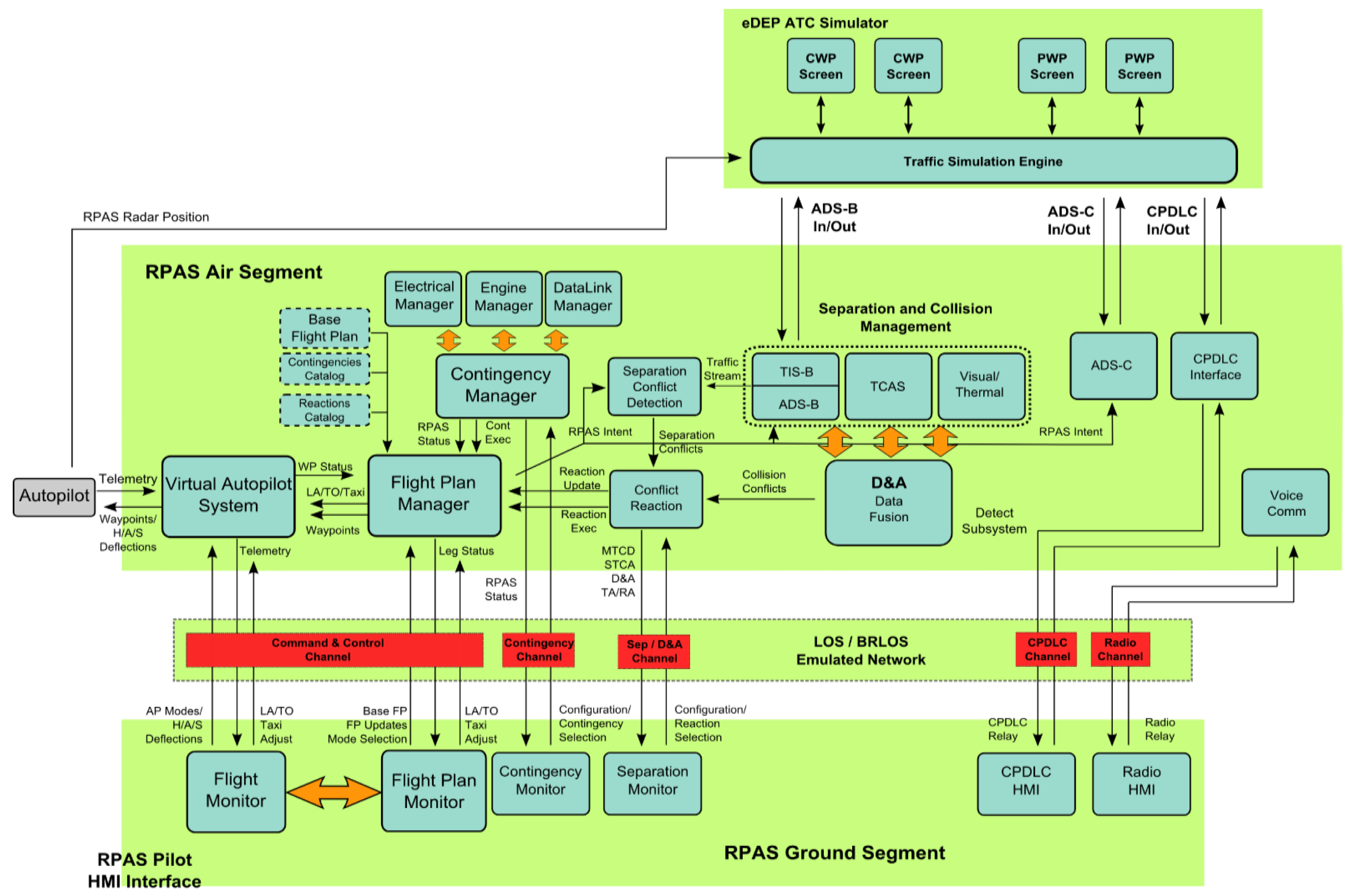
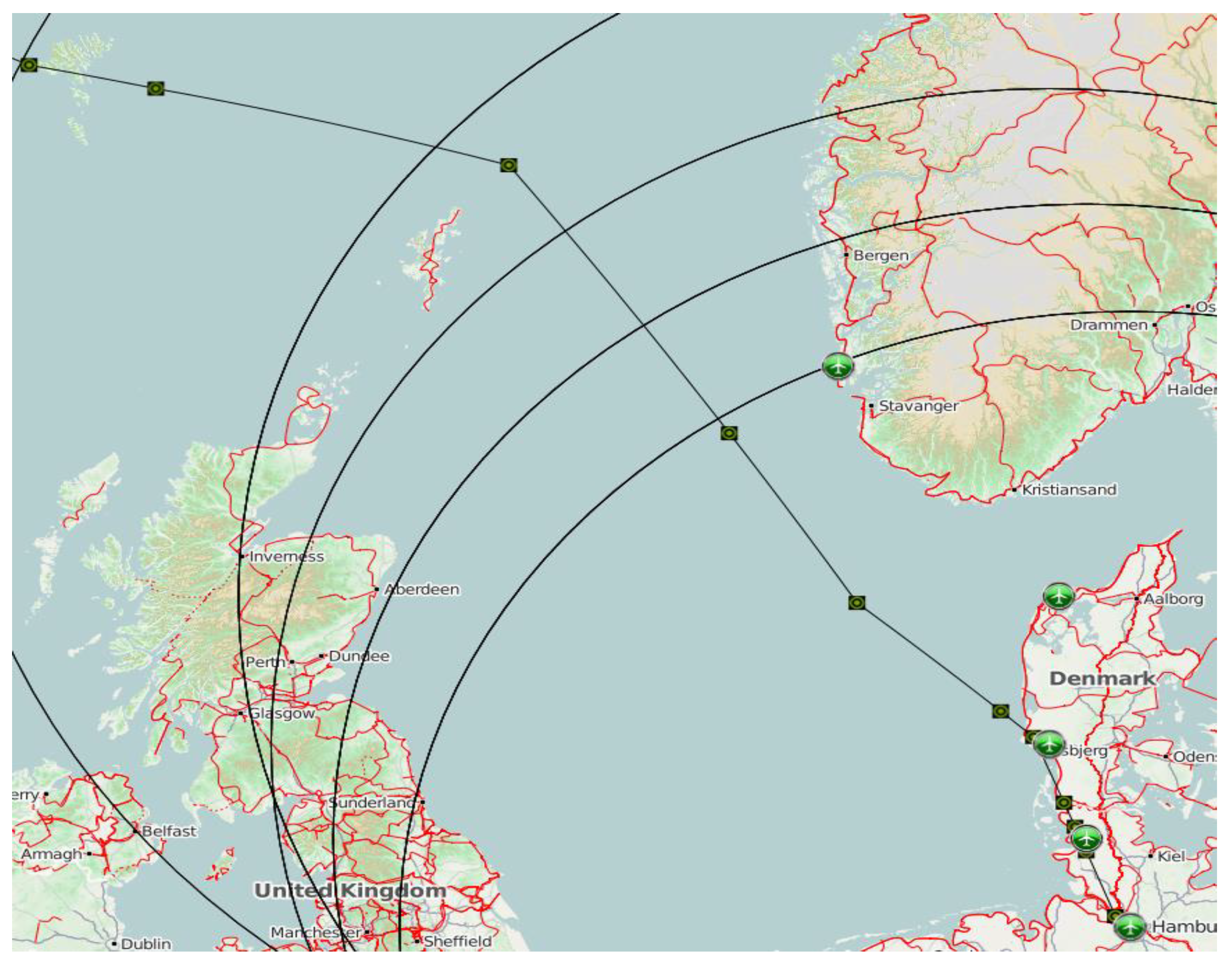
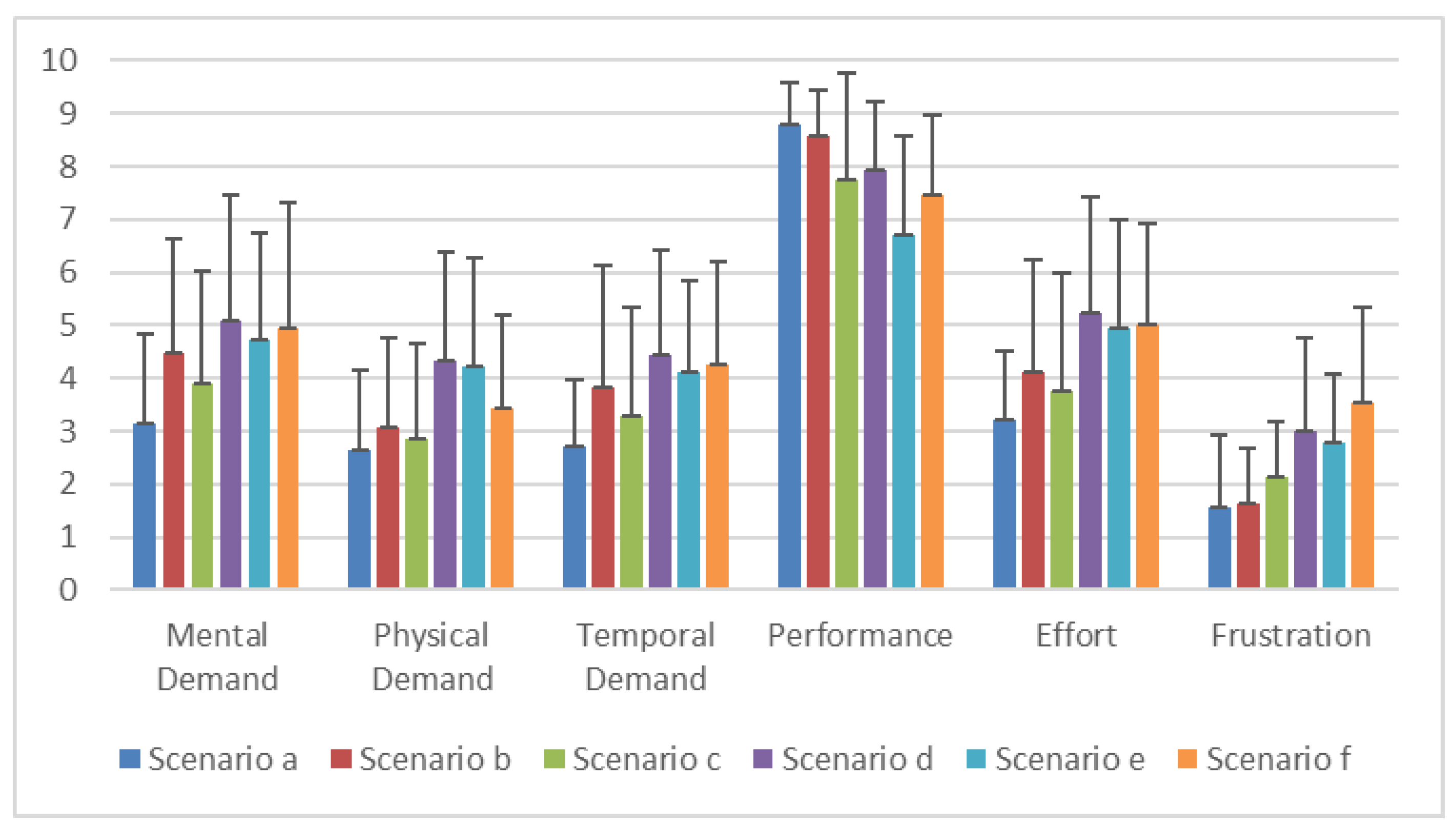
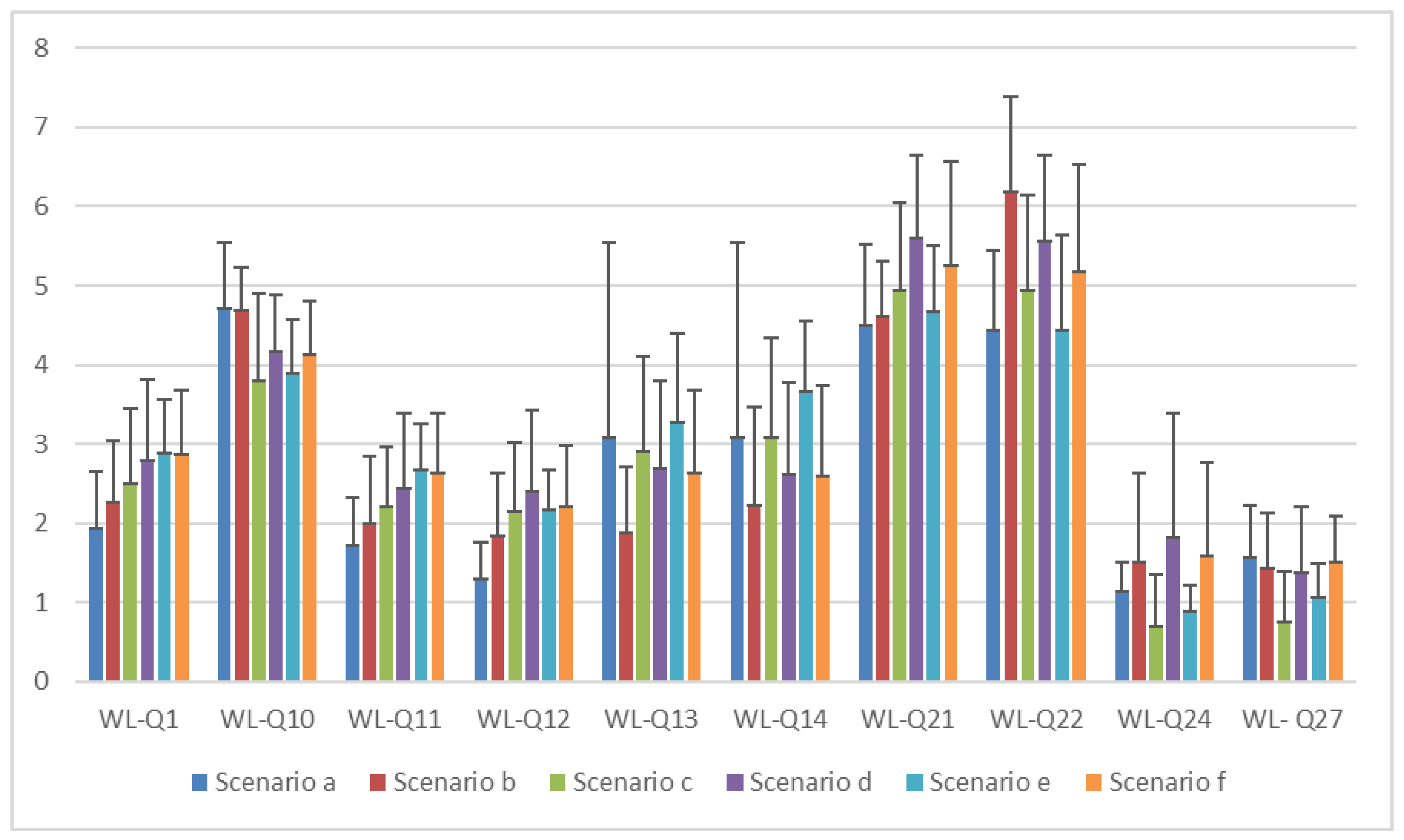

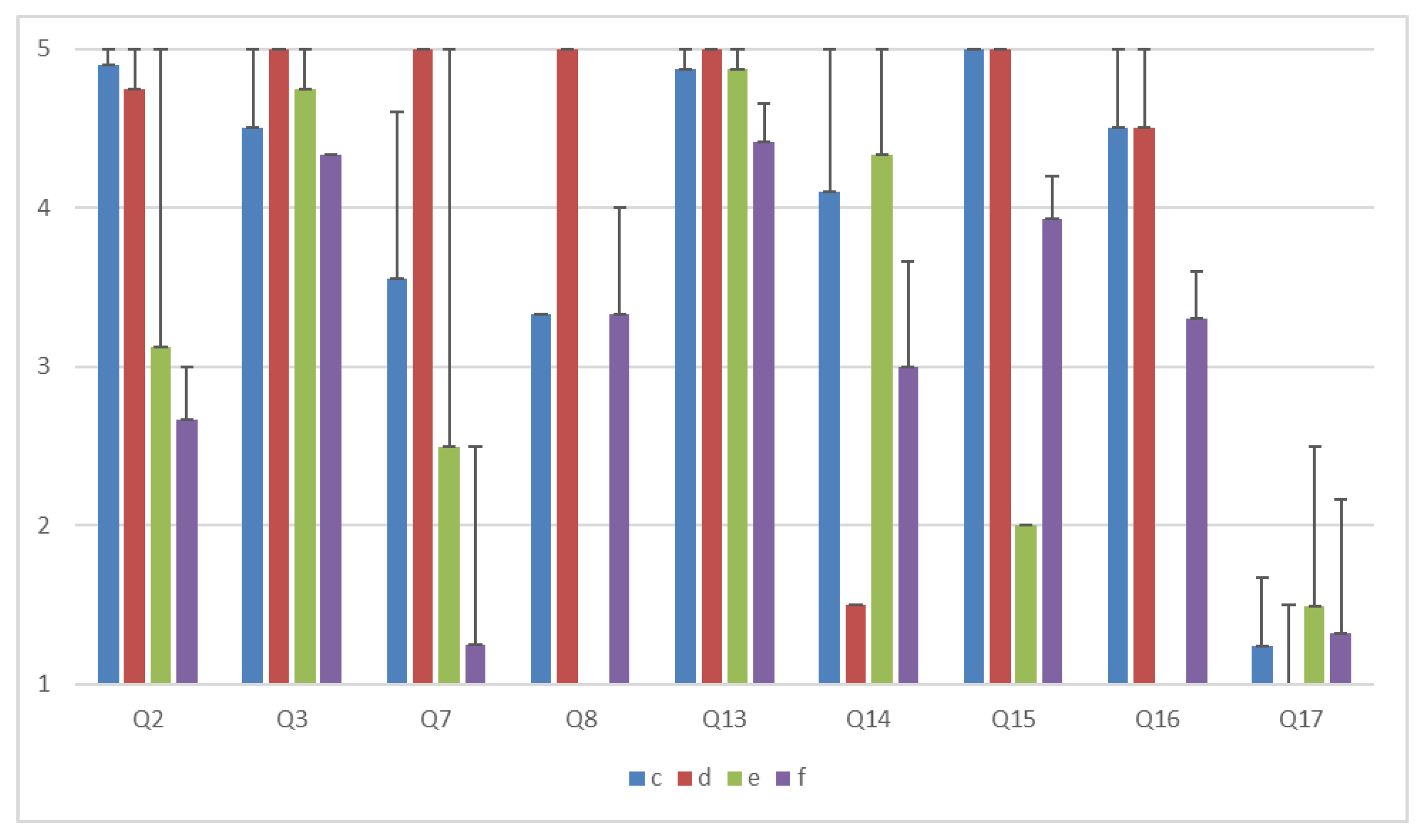
| Rating Scale | Kind of Evaluation | Evaluation Area |
|---|---|---|
| NASA Task Load Index [10] | Subjective assessments | Workload |
| Instantaneous Self-assessment [11] | Subjective assessments | Workload |
| Cognitive Architecture for Safety Critical Task Simulation (CASCaS) [12] | Analytical techniques | Advanced flight interfaces |
| Air-Man-Machine Integration Design and Analysis System (Air-MIDAS) [13] | Analytical techniques | ATC handoff tasks and ATM free flight concept |
| Modified Bedford [14] | Subjective assessments | Flight handling qualities |
| Modified Cooper-Harper [15] | Subjective assessments | Flight handling qualities |
| Subjective Workload Assessment Technique (SWAT) [16] | Subjective assessments | Workload |
| Situational Awareness Rating Technique (SART) [17] | Subjective assessments | Situational awareness |
| Situational Awareness Subjective Workload Dominance (SA-SWORD) [17] | Subjective assessments | Situational awareness |
| Situational Awareness Supervisory Rating Form [17] | Subjective assessments | Situational awareness |
| Adaptive Control of Thought-Rational (ACT-R) [18] | Cognitive architectures | ATC human–machine interactions |
| Situation Awareness Global Assessment Technique (SAGAT) [19] | Task-based metrics | Situational awareness of pilots and ATM operators |
| Situation Present Assessment Method (SPAM) [19] | Task-based metrics | Situation awareness in air traffic control tasks |
| Capacity analysis methodology (CAPAN) [20] | Task-based metrics | ATC workload and sector capacity |
|
|
| Scenario ID | Description | Pilot-ATC Communications |
|---|---|---|
| Scenario (a) | Baseline. No RPAS operating | Radiotelephone |
| Scenario (b) | RPAS operating. No contingency. With the support of flight-intent technology | Radiotelephone |
| Scenario (c) | RPAS operating. Engine failure contingency. Without the support of flight-intent technology | Radiotelephone |
| Scenario (d) | RPAS operating. Engine failure contingency. Support of flight-intent technology | Radiotelephone/ADS-C datalink |
| Scenario (e) | RPAS operating. Lost-link contingency. Without the support of flight-intent technology | Radiotelephone |
| Scenario (f) | RPAS operating. Lost-link contingency. Support of flight-intent technology | Radiotelephone/ADS-C datalink |
| Scenario | MQ-9 | RQ-4 | TOTAL | ||||||||||
|---|---|---|---|---|---|---|---|---|---|---|---|---|---|
| LECBNW2 | LECBNE | Total Time | EDYYHOL | EKDCUC | Total Time | Num | Time [RPAS] | Time [Total] | |||||
| Num | Time [RPAS] | Num | Time [RPAS] | Num | Time [RPAS] | Num | Time [RPAS] | ||||||
| a | 1 | 0 | 1 | 0 | 52 | 2 | 0 | 0 | 0 | 91 | 3 | 0 | 143 |
| c | 2 | 51 | 1 | 9 | 71 | 6 | 140 | 2 | 6 | 261 | 8 | 206 | 332 |
| d | 2 | 66 | 2 | 6 | 79 | 1 | 13 | 1 | 12 | 45 | 3 | 97 | 123 |
| e | 2 | 53 | 2 | 13 | 74 | 3 | 13 | 3 | 45 | 78 | 5 | 124 | 152 |
| f | 2 | 65 | 2 | 26 | 91 | 2 | 8.5 | 2 | 30 | 56 | 4 | 130 | 147 |
| 23 | 557 | 897 | |||||||||||
| Scenario | MQ-9 | RQ-4 | TOTAL | ||||||||||
|---|---|---|---|---|---|---|---|---|---|---|---|---|---|
| LECBNW2 | LECBNE | Total Time | EDYYHOL | EKDCUC | Total Time | Num | Time [RPAS] | Time [Total] | |||||
| Num | Time [RPAS] | Num | Time [RPAS] | Num | Time [RPAS] | Num | Time [RPAS] | ||||||
| a | 1 | 0 | 2 | 0 | 121 | 3 | 0 | 3 | 0 | 166 | 4 | 0 | 287 |
| c | 0 | 0 | 0 | 0 | 0 | 0 | 0 | 0 | 0 | 0 | 0 | 0 | 0 |
| d | 5 | 189 | 5 | 19 | 291 | 7 | 158 | 7 | 46 | 376 | 12 | 411 | 667 |
| e | 0 | 0 | 0 | 0 | 0 | 0 | 0 | 0 | 0 | 0 | 0 | 0 | 0 |
| f | 5 | 184 | 5 | 30 | 272 | 8 | 51 | 8 | 104 | 366 | 13 | 369 | 638 |
| 29 | 780 | 1593 | |||||||||||
| Contingency Analysis—General Workload Questions |
|---|
| Scale: Variable depending on question |
| Q1. What is your estimate of your overall workload during the last run? |
| Q2. How great a part did radio and telephone communications play overall during the last run? |
| Q3. How great a part did the complexity and/or load of the traffic play in your overall workload during the last run? |
| Q4. How great a part did problems with procedures play in your overall workload during the last run? |
| Q5. How great a part did problems with the HMI (such as a sticking mouse, slow response times, label overlapping, unclear airspace presentation, etc.) play in your overall workload during the last run? |
| Q6. Did you feel that the number of system inputs required was: |
| Q7. Did you feel that the number of R/T transmissions required was: |
| Q8. Was the amount of monitoring of labels and RPS required: |
| Q9. Was the amount of coordination required: |
| Q10. What is your estimate of your overall situation awareness (clear picture of the situation) during the last run? |
| Q11. What was your level of stress during the last run? |
| Q12. What was your level of fatigue just after having finished the last run? |
| Q13. How easy/difficult was it for you to maintain standard separations between aircrafts during the last run? |
| Q14. How easy/difficult was it for you to sequence the traffic and/or monitor the sequence order and aircraft spacing during the last run? (if applicable) |
| Q15. How much did the ISA prompt interfere with your controlling activities? |
| Q16. Do you believe the number of conflicts in the exercise was: |
| Q17. Was the detection of long-term conflicts: |
| Q18. Was the detection of short-term conflicts: |
| Q19. Was the resolution of long-term conflicts: |
| Q20. Was the resolution of short-term conflicts: |
| Q21. Did you have the feeling that you were ahead of the traffic, able to predict the evolution of the traffic? |
| Q22. Did you have the feeling that you were able to plan and organize your work as you wanted? |
| Q23. Have you been surprised by an event that you were not expecting (such as an aircraft call)? |
| Q24. Did you have the feeling of starting to focus too much on a single problem and/or area of the sector? |
| Q25. Did you forget something important (such as transfer an aircraft on time or communicate a change to an adjacent sector)? |
| Q26. Did you have any difficulty in finding an item of information? |
| Q27. Were there any instances where you felt you provided instructions later than you should have? |
| Q28. Were you surprised by an action performed by one of your colleagues that you were not expecting? |
| Contingency Analysis—Operation Questionnaire |
|---|
| Scale: Variable depending on question |
| Q1. Which mechanism has employed the RPAS to communicate the contingency to the ATC controller? |
| Select more than one if needed (Voice comm, Transponder setting, Datalink, None) |
| Q2. Was the RPAS pilot able to communicate the contingency to the ATC controller in an accurate way? |
| Q3. Was the RPAS able to complete the contingency procedure as initially agreed with the ATC? |
| Q4. Was the RPAS able to successfully manage the contingency employing a non-expected or non-pre planned procedure agreed with the ATC on-the-fly? |
| Q5. Contingency procedures have been designed and pre-evaluated to be 100% feasible. If they are not properly executed during the contingency needs to be investigate the main cause? |
| Please specify the cause: (RPAS malfunction, RPAS pilot error, ATC interaction, Other) |
| Q6. Which mechanism has employed the RPAS to update the development of the contingency procedure to the ATC controller? |
| Select more than one if needed (Voice comm, Transponder setting, Datalink, Radar track, None) |
| Q7. Was the RPAS pilot accurately communicating with the ATC updating the RPAS contingency state and responding to the ATC request? |
| Q8. If a datalink was employed by the RPAS, was the information provided to the ATC accurately updating the RPAS intentions? |
| Q9. Was the ATC aware of the RPAS capabilities and operational envelops so that they maintained situational awareness with respect the RPAS intentions? |
| Q10. How important for the proper development of the contingency was the fact that the ATC controller had a full understanding of the RPAS operational envelop and performance? |
| Q11. Was the ATC accurately communicating with the RPAS pilot and responding to RPAS requests? |
| Q12. Was the RPAS operation negatively impacted by the interaction with the ATC? |
| Q13. Was the RPAS accurately flying the predefined contingency trajectory? The level of accuracy depends on the type of contingency, with the requirements for lost link being much stricter than those required for engine failure. Accuracy will be agreed during the pre-briefing. |
| Q14. Was the RPAS ADS-B/transponder properly indicating its contingency state? The question is employed to keep track of potential malfunctions of that element during the simulations. |
| Q15. Was the RPAS flight intent properly provided and accurate with the actual trajectory? The question is employed to keep track of potential malfunctions of that element during the simulations. |
| Q16. Did the flight intent improve the overall situational awareness of the ATC with respect to the RPAS contingency operation and beyond the existing awareness available through the mission pre-planning? |
| Q17. Was the RPAS impact on the traffic performance excessive; i.e., the surrounding traffic was impacted negatively from their desired trajectories? |
| Q18. Was the RPAS impact on the ATC workload excessive with respect to the workload induced by similar contingencies in manned aviation? |
| TLX Category | Null Hypothesis | Statistic | p-Value |
|---|---|---|---|
| Mental demand | H0RPAS | −1.911015 | 0.0637736 |
| H0contingency | −2.359384 | 0.02035207 | |
| Physical demand | H0RPAS | −0.802929 | 0.42700899 |
| H0contingency | −1.931829 | 0.05632923 | |
| Temporal demand | H0RPAS | −1.705852 | 0.09619784 |
| H0contingency | −2.466407 | 0.01542096 | |
| Performance | H0RPAS | 0.7513499 | 0.45707032 |
| H0contingency | 2.7804155 | 0.00652202 | |
| Effort | H0RPAS | −1.431552 | 0.16044591 |
| H0contingency | −2.613374 | 0.01039295 | |
| Frustration | H0RPAS | −0.218248 | 0.82840352 |
| H0contingency | −2.961887 | 0.00384499 |
| Full Simulation | RPAS in Sector | ||||||||
|---|---|---|---|---|---|---|---|---|---|
| ISA Workload | Response Time | ISA Workload | Response Time | ||||||
| MQ-9 | Avg | Max | Avg | Max | Avg | Max | Avg | Max | |
| Run1 | a | 1.29 | 2.00 | 2.92 | 17.50 | ||||
| c | 1.66 | 3.50 | 4.23 | 20.29 | 1.41 | 3.50 | 2.02 | 14.75 | |
| d | 1.64 | 3.00 | 2.84 | 13.27 | 1.48 | 2.00 | 2.60 | 13.27 | |
| e | 2.07 | 3.50 | 2.89 | 7.85 | 2.02 | 3.50 | 3.13 | 5.21 | |
| f | 2.29 | 3.50 | 2.36 | 5.11 | 2.64 | 3.50 | 3.04 | 2.11 | |
| Run2 | a | 1.27 | 2.50 | 2.67 | 11.81 | ||||
| d | 1.98 | 3.80 | 2.20 | 2.00 | 1.99 | 3.80 | 2.20 | 7.43 | |
| f | 2.06 | 3.60 | 2.94 | 13.73 | 2.15 | 3.60 | 3.44 | 13.73 | |
| Full Simulation | RPAS in Sector | ||||||||
|---|---|---|---|---|---|---|---|---|---|
| ISA Workload | Response Time | ISA Workload | Response Time | ||||||
| RQ-4 | Avg | Max | Avg | Max | Avg | Max | Avg | Max | |
| Run1 | a | 1.95 | 3.00 | 3.30 | 7.85 | ||||
| c | 2.31 | 5.00 | 3.55 | 11.79 | 1.61 | 3.20 | 1.61 | 5.72 | |
| d | 2.20 | 3.00 | 3.17 | 18.59 | 2.25 | 3.00 | 2.81 | 8.04 | |
| e | 2.06 | 3.00 | 4.12 | 17.53 | 2.42 | 2.67 | 4.05 | 9.13 | |
| f | 2.23 | 4.00 | 2.90 | 10.52 | 2.41 | 3.00 | 2.94 | 5.18 | |
| Run2 | a | 1.92 | 2.50 | 2.46 | 9.52 | ||||
| d | 1.93 | 3.00 | 2.86 | 9.25 | 2.25 | 2.83 | 3.04 | 8.76 | |
| f | 2.07 | 2.83 | 2.85 | 10.08 | 2.33 | 2.83 | 3.80 | 8.12 | |
| Full Simulation | RPAS in Sector | ||||||||
|---|---|---|---|---|---|---|---|---|---|
| ISA Workload | Response Time | ISA Workload | Response Time | ||||||
| MQ-9 | Avg | Max | Avg | Max | Avg | Max | Avg | Max | |
| Run1 | a | 2.22 | 4.00 | 3.66 | 17.69 | ||||
| b | 2.36 | 4.00 | 2.94 | 22.76 | 2.51 | 3.40 | 2.77 | 9.66 | |
| Run2 | a | 1.98 | 3.00 | 2.46 | 9.53 | ||||
| b | 1.73 | 3.21 | 2.52 | 9.38 | 1.87 | 3.14 | 2.57 | 7.75 | |
| Full Simul. | RPAS in Sector | RPAS Contrib. | |||||
|---|---|---|---|---|---|---|---|
| Run1 | Max. Taskload | Av. Taskload | Max. Taskload | Av. Taskload | Max. Taskload | Av. Taskload | |
| LECBNW2 | a | 31.00 | 17.28 | ||||
| c | 41.50 | 20.99 | 41.00 | 28.43 | 3.50 | 1.96 | |
| d | 38.00 | 20.69 | 38.00 | 28.04 | 5.00 | 2.13 | |
| e | 33.50 | 18.65 | 33.50 | 26.05 | 2.00 | 0.59 | |
| f | 45.00 | 19.96 | 41.50 | 22.58 | 4.50 | 1.55 | |
| LECBNE | a | 17.00 | 5.87 | ||||
| c | 26.00 | 10.43 | 21.00 | 16.17 | 2.50 | 1.46 | |
| d | 23.00 | 8.79 | 9.00 | 7.67 | 3.00 | 1.33 | |
| e | 26.50 | 9.58 | 26.50 | 21.70 | 2.50 | 1.75 | |
| f | 24.00 | 7.20 | 24.00 | 16.29 | 2.50 | 1.21 | |
| Run2 | Max. Taskload | Av. Taskload | Max. Taskload | Av. Taskload | Max. Taskload | Av. Taskload | |
| LECBNW2 | a | 33.50 | 14.35 | 47.00 | |||
| d | 47.40 | 19.64 | 43.00 | 29.25 | 5.20 | 2.48 | |
| f | 43.00 | 19.39 | 10.67 | 28.23 | 5.20 | 2.55 | |
| LECBNE | a | 20.00 | 4.28 | 21.75 | |||
| d | 26.20 | 5.88 | 9.73 | 3.33 | 1.56 | ||
| f | 20.60 | 5.07 | 18.16 | 3.00 | 1.58 | ||
Disclaimer/Publisher’s Note: The statements, opinions and data contained in all publications are solely those of the individual author(s) and contributor(s) and not of MDPI and/or the editor(s). MDPI and/or the editor(s) disclaim responsibility for any injury to people or property resulting from any ideas, methods, instructions or products referred to in the content. |
© 2023 by the authors. Licensee MDPI, Basel, Switzerland. This article is an open access article distributed under the terms and conditions of the Creative Commons Attribution (CC BY) license (https://creativecommons.org/licenses/by/4.0/).
Share and Cite
Reyes-Muñoz, A.; Barrado, C.; Pastor, E.; Royo, P. ATC Human Factors Involved in RPAS Contingency Management in Non-Segregated Airspace. Appl. Sci. 2023, 13, 1408. https://doi.org/10.3390/app13031408
Reyes-Muñoz A, Barrado C, Pastor E, Royo P. ATC Human Factors Involved in RPAS Contingency Management in Non-Segregated Airspace. Applied Sciences. 2023; 13(3):1408. https://doi.org/10.3390/app13031408
Chicago/Turabian StyleReyes-Muñoz, Angelica, Cristina Barrado, Enric Pastor, and Pablo Royo. 2023. "ATC Human Factors Involved in RPAS Contingency Management in Non-Segregated Airspace" Applied Sciences 13, no. 3: 1408. https://doi.org/10.3390/app13031408
APA StyleReyes-Muñoz, A., Barrado, C., Pastor, E., & Royo, P. (2023). ATC Human Factors Involved in RPAS Contingency Management in Non-Segregated Airspace. Applied Sciences, 13(3), 1408. https://doi.org/10.3390/app13031408









